What if India could unlock the power of a fifth-generation fighter jet, without building one from scratch?
This isn’t a futuristic fantasy. It’s happening right now through India’s transformative Super Sukhoi upgrade programme.
As someone who’s closely followed India’s aerospace journey, I see this as a masterstroke. Rather than wait for stealth jets to arrive, the Indian Air Force (IAF) is supercharging its existing Su-30MKI fleet, our frontline multirole fighter, with next-gen systems, AI, and powerful weaponry. The goal? To make them smarter, deadlier, and networked for tomorrow’s wars.
What Is the Super Sukhoi Upgrade Programme?
The Super Sukhoi programme refers to a massive mid-life upgrade of over 260 Su-30MKI jets in service with the IAF. These upgrades will enhance the aircraft’s capability to match many features of fifth-generation fighters, excluding stealth, making it one of the most lethal air superiority platforms in the region.
Key technologies include:
- Manned-Unmanned Teaming (MUM-T) using AI
- Next-generation AESA radar systems
- Digital avionics and secure data links
- Modern air-to-air and air-to-ground weapon integration
- Advanced electronic warfare (EW) suites
This is not just an upgrade, it’s a complete transformation, aligning with India’s Atmanirbhar Bharat defence vision.
MUM-T and AI: Su-30MKIs Get a Digital Brain
One of the most groundbreaking features of the Super Sukhoi is its Manned-Unmanned Teaming (MUM-T) capability.
Imagine this: a Su-30MKI flying high over contested airspace, not alone, but commanding a team of autonomous combat drones. These loyal wingmen could scout, jam enemy radars, or even launch precision strikes, all coordinated by the pilot through encrypted, AI-powered data links.
This is next-gen warfare, and India is stepping right into it.
AI-Enabled Data Sharing and Battlefield Awareness
The upgraded Su-30MKIs will integrate AI-enabled mission computers and high-bandwidth secure data links. These systems allow the aircraft to communicate in real-time with AWACS (Airborne Warning and Control Systems), ground stations, and even other fighter jets.
In fast-evolving combat zones, this means the difference between reacting and dominating.
Near 5th-Gen Fighter Capabilities – Minus the Stealth
While the Super Sukhoi won’t be stealthy like the AMCA or F-35, it will pack almost everything else:
- GaN-based AESA radar (Virupaaksha)
- Long-range infrared search & track (IRST) sensors
- Network-centric warfare compatibility
- Smart cockpit interface with digital multifunction displays
In short, India’s upgraded Su-30MKIs will be almost at par with fifth-generation fighters in performance, minus the stealth.
Super Sukhoi and India’s Strategic Defence Vision
Upgrading the Su-30MKI fleet is not just about boosting performance; it’s a calculated decision to:
- Extend the life of existing assets
- Maximise combat capability without buying expensive new jets
- Support domestic defence industries through indigenous technology integration
This aligns perfectly with India’s defence indigenisation strategy, making the Super Sukhoi both a smart and sovereign choice.
Super Sukhoi Key Features
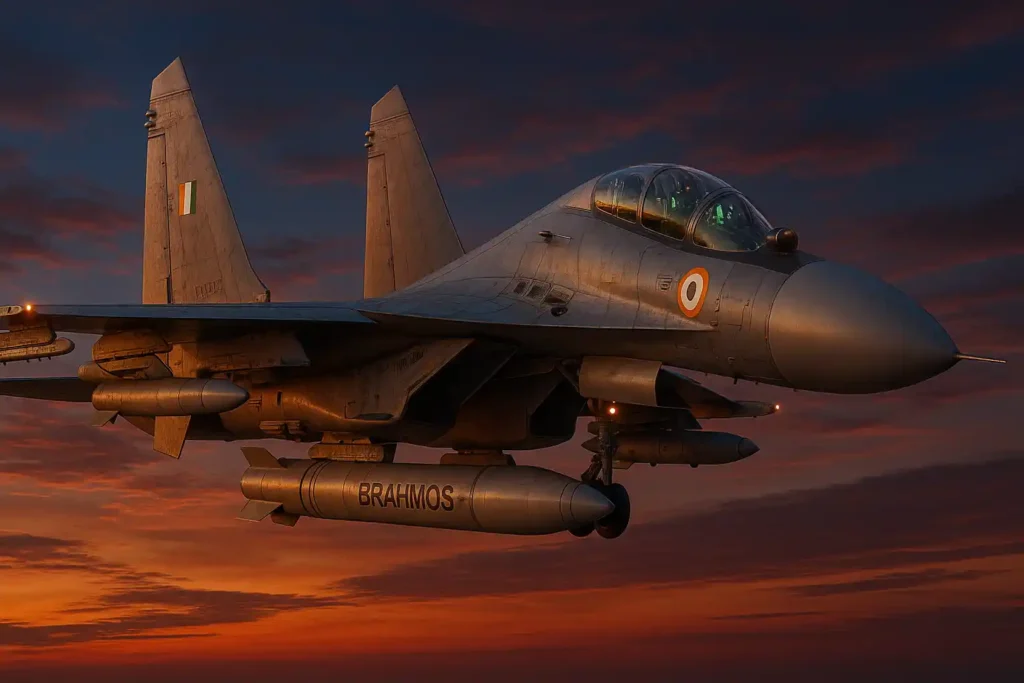
1. Virupaaksha AESA Radar: Eyes That See Far
The Russian Bars radar is being replaced with India’s indigenous Virupaaksha AESA radar, developed using cutting-edge GaN (gallium nitride) technology. This radar can:
- Detect and track over 100 targets simultaneously
- Operate in high-jamming environments
- Guide long-range missiles with pinpoint accuracy
This is India’s radar answer to global giants like the AN/APG-81.
2. Digital Avionics & Cockpit Revolution
The Super Sukhoi cockpit is being reimagined with:
- Touchscreen multifunctional displays
- AI-assisted decision-making tools
- Advanced flight management systems
- Upgraded Heads-Up Displays (HUDs)
It’s like turning your smartphone into a command centre for war.
3. Weapons Integration: A True Multirole Beast
These upgraded jets will carry India’s deadliest arsenal:
- BrahMos-A and BrahMos-ER for deep strike missions
- Astra Mk-2 for long-range air combat
- R-77-1 and future smart munitions
- Laser-guided bombs and standoff glide weapons
With these, the Super Sukhoi becomes a formidable force across both air dominance and ground strike roles.
4. Electronic Warfare and Survivability Boost
The new EW suite offers next-gen protection:
- Digital radar jammers
- Missile approach warning systems
- Chaff and flare dispensers
- Enhanced stealth via electronic deception
Additionally, structural enhancements will increase payload capacity and extend the aircraft’s operational life.
SCO 2025: India-Russia Defence Collaboration
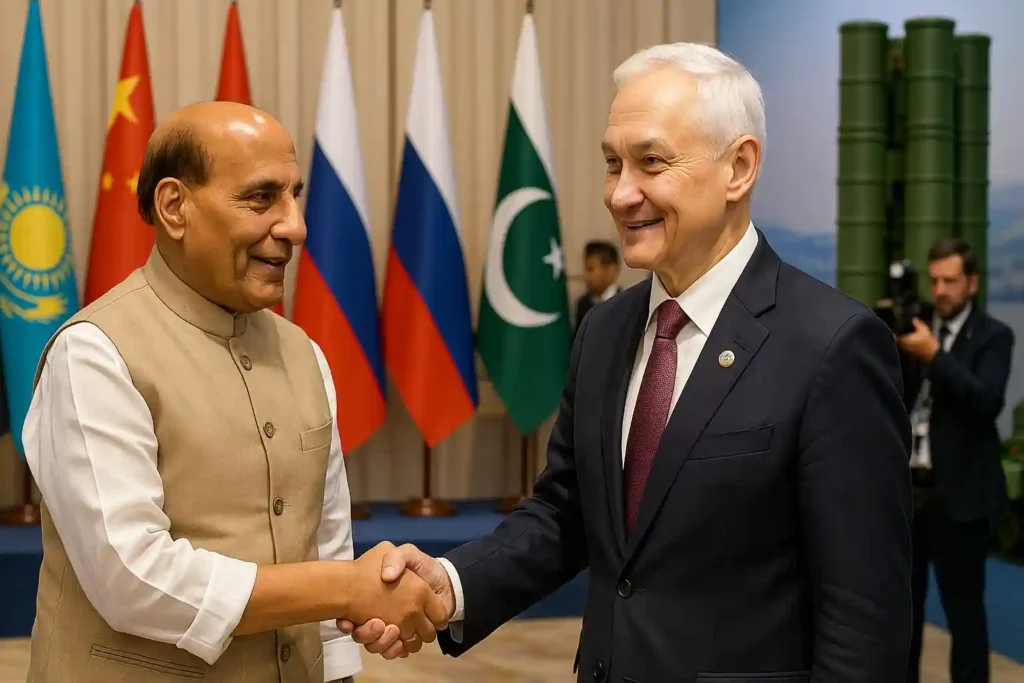
In June 2025, at the SCO Defence Ministers’ Meeting in Qingdao, Defence Minister Rajnath Singh and Russian Defence Minister Andrey Belousov advanced strategic cooperation.
1. India-Russia S-400 Air Defence Deal Update
India confirmed the procurement of two additional S-400 air defence systems, further strengthening its multi-layered air defence network.
Delivery of pending S-400 squadrons is now scheduled for 2026-27.
2. Agreement on Super Sukhoi Upgrade Acceleration
Both sides agreed to fast-track the Su-30MKI upgrade, with HAL and DRDO leading integration of Virupaaksha radar, AI-based avionics, modern weapons, and MUM-T capability on Su-30MKI jets.
3. S-500 Missile Defence and Su-57 Collaboration
Preliminary talks explored cooperation on the S-500 system and a potential Su-57 India deal for co-production or technology transfer.
Why the Super Sukhoi Programme Matters for India’s Airpower
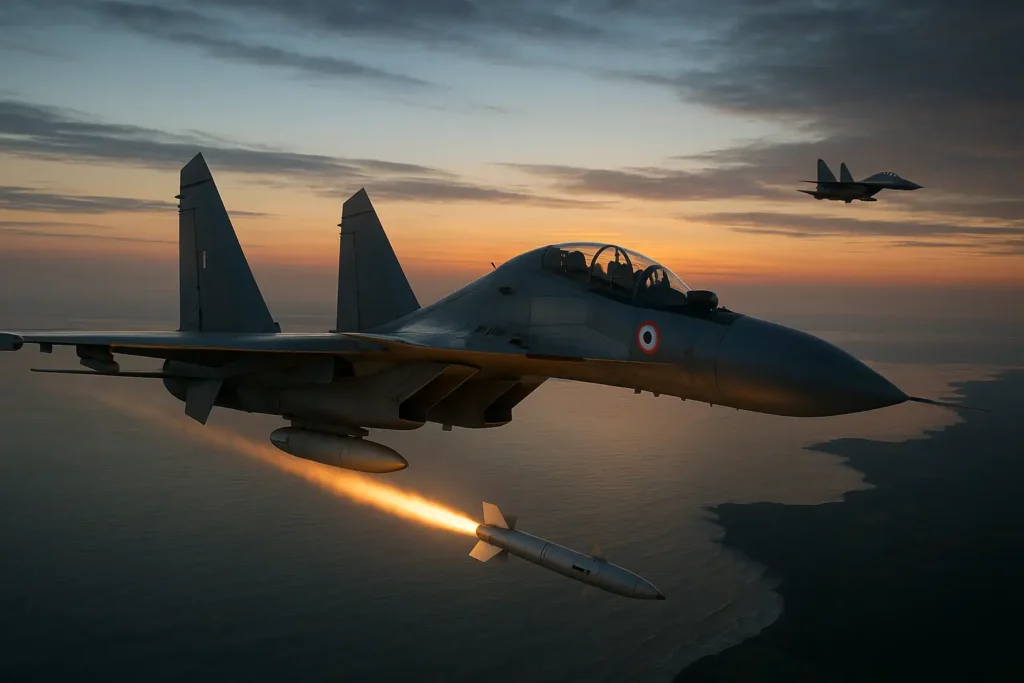
1. Air Superiority in the Indo-Pacific
With China modernising its air fleet and Pakistan acquiring advanced jets, India needs cutting-edge solutions now, not a decade from now. Super Sukhoi gives the IAF:
- Extended strike range
- Better radar and EW capability
- Rapid threat response
Perfect for the volatile Indo-Pacific region.
2. Atmanirbhar Bharat in Action
By using Indian-developed systems like the Virupaaksha radar, AI mission computers, and indigenous munitions, the programme drives defence self-reliance.
3. Regional Deterrence with Smart Power
An upgraded Su-30MKI fleet capable of engaging stealth aircraft, drones, and cruise missiles is a direct message: India will not be caught unprepared.
4. Cost-Effective Airpower Modernisation
A new 5th-gen fighter could cost over ₹1,000 crore per unit. The Super Sukhoi upgrade achieves comparable capability at a fraction of the cost.
5. Preparedness for Future Wars
Combat is evolving. With AI, drone swarms, and electronic warfare becoming common, the IAF needs fighters that can adapt. That’s what the Super Sukhoi delivers.
Super Sukhoi Timeline: From Blueprints to Battle-Ready
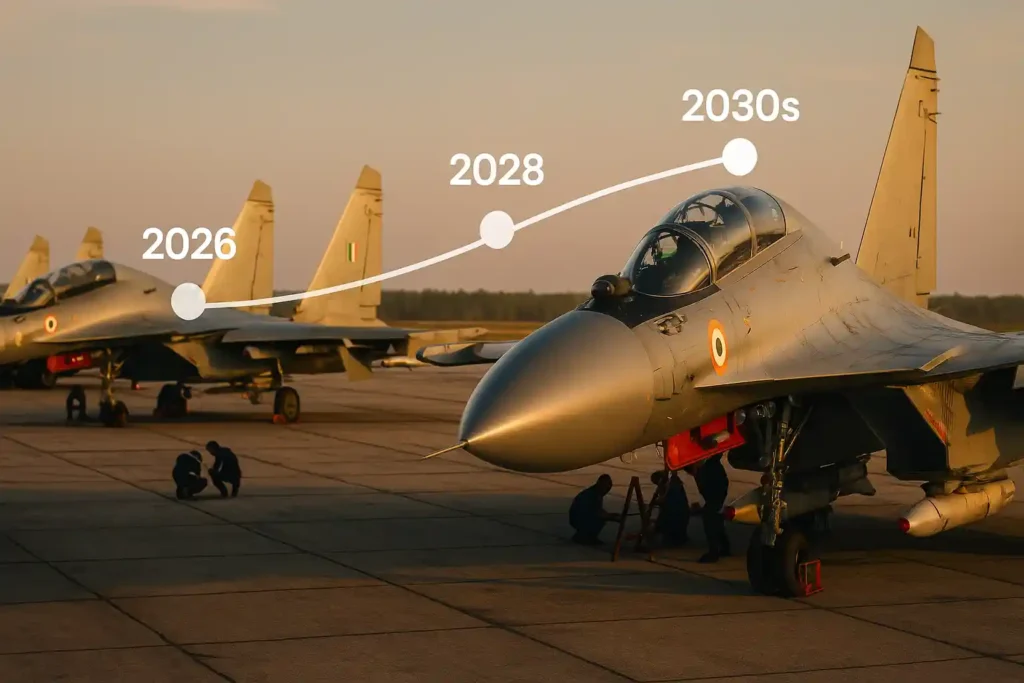
| Year | Milestone |
|---|---|
| 2026 | Indigenous subsystems integrated; testing begins |
| 2027 | First prototype ready for evaluation |
| 2028 | Initial Operational Capability (IOC) achieved |
| 2030-2032 | Full fleet upgrade across all IAF squadrons |
The Road Ahead: S-500 and Su-57 Synergies
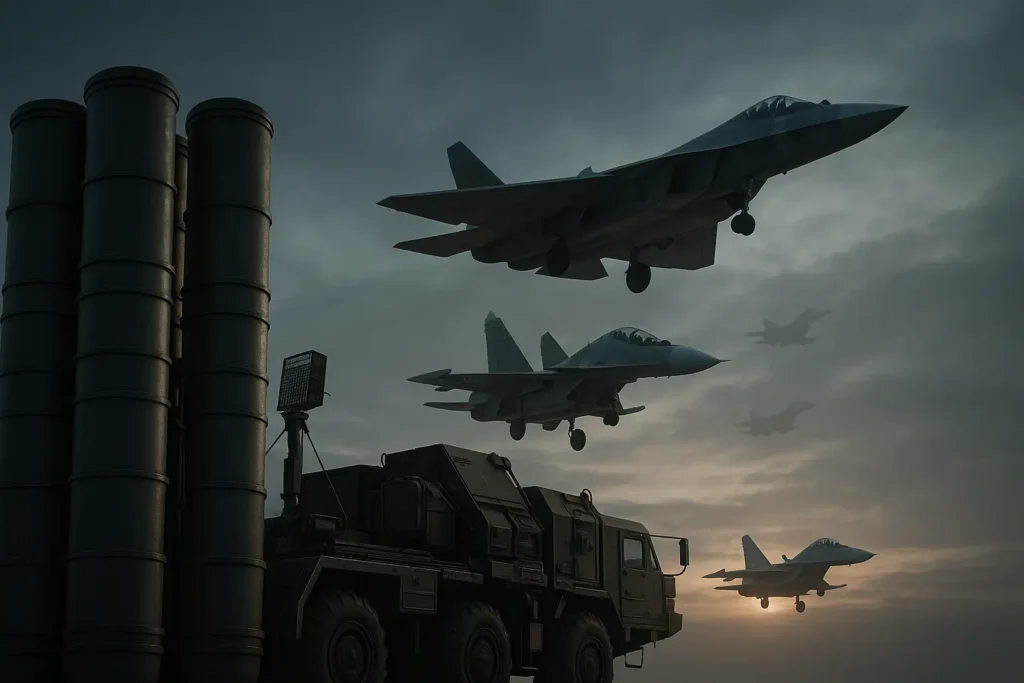
India’s future defence roadmap includes potential integration of S-500 air and missile defence systems and Su-57E stealth fighters. These capabilities could work alongside Super Sukhoi jets to provide layered defence and 5th-gen operational reach.

FAQs About Super Sukhoi
- How many aircraft will be upgraded?
India aims to modernise over 260 Su-30MKI jets under the Super Sukhoi programme. - What weapons will they carry?
These jets will be armed with BrahMos-A, Astra Mk-2, BrahMos-ER, R-77-1, and other smart munitions. - When will they join the IAF service?
The first batch is expected to enter service by 2028. - Who is leading the programme?
The upgrades are being executed by HAL and DRDO, with contributions from the Indian private defence sector. - How cost-effective is this compared to buying new jets?
Upgrading costs are 60–70% lower than acquiring brand-new fifth-generation fighters. - Will Super Sukhoi match a stealth jet?
It won’t have stealth, but with advanced radars, AI, MUM-T, and electronic warfare systems, it will operate in a 5th-gen battle environment effectively.
Final Thoughts: Why I Believe in the Super Sukhoi
I’ve watched the Su-30MKI dominate India’s skies for two decades. But what the Super Sukhoi promises is evolution—not just in metal and electronics, but in doctrine, mindset, and strategy.
It shows that India doesn’t always need to build from scratch to lead. Sometimes, the smarter move is to adapt and elevate what we already own, and do it indigenously.
With AI, smart weapons, MUM-T capabilities, and home-grown tech, the Super Sukhoi isn’t just an upgrade; it’s the future of Indian airpower, taking flight today.
For more in-depth updates on IAF modernisation, S-500 talks, and 5th-gen fighter developments, keep reading DefenceNewsIndia.in.
